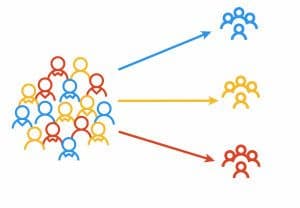
Serve Your Best Customers First

Customer segmentation has long been a standard in other industries. For instance, there are countless examples of manufacturers slapping a different label on an automobile and marketing it to a dissimilar demographic either based on a difference in price, image, or even branding. Applying this same philosophy to the concrete contractor can benefit customer retention and profitability.
Customer segmentation is simply a process by which you organize your customers regarding their needs and your services. The process allows a company to select, prioritize, define, and deliver tailored value propositions for customer segments, and develop and manage effective channels for serving these customers.
While we know that all clients are not created equal, often we provide the same level of service to our top clients that we provide to our least desirable ones.
For example, while it is appropriate to work overtime and move other deadlines around to meet the needs of an “A” client – one that refers other profitable work to you, understands your value, pays your invoices on time – it’s not smart to take that same approach for a one-time client that will never refer you to others and is slow to pay.
Make a list
The first step in segmenting your customer base is to identify what you view as important in a client. Make a list of the things you deem important. With this list of desirable attributes complete, go through and weigh your clients on a scale of one to 10 in how they perform. Many find it simple to group the tallied numbers at the end in three categories – A, B, and C clients. You’ll be surprised when you realize that you cater to many of the less desirable.
Now, with the criteria established and a basis for where each client falls, determine what level of service is a fit for each category. For example, today many retailers move C customers to web and phone orders only, ensuring that expensive time with a salesperson falls in the A or B range. Companies will also break down ongoing service into customer segments.
Using these scenarios as an example, discern different offering levels for the products and services you provide. For example, an A client may garner same-day service, while a C client should be handled within 48 hours. Be sure that the definition of service offerings goes beyond actual tangible deliverables but also includes things such as communication. The key is to be fair, not equal.
This process should result in standard operating procedures for all clients. While such tactics may seem out of the norm, most firms report that customer segmentation improves customer service, since you are focusing energy on tasks, and communication through more effective allocation and utilization of resources. Profitability also increases since you are getting paid for value delivered.
To see an infographic of the customer segmentation process, click here.
Kimberly Kayler, CPSM, CSI, is president of Constructive Communication. With a journalism degree and a decade of high-level experience serving engineering, architecture and construction firms as a corporate marketing executive, as well as experience working for a full-service advertising/marketing communications agency, Kimberly started Constructive Communication, Inc. in 2001 to serve the needs of technical and professional service firms. She can be reached at: 614-873-6706 or kkayler@constructivecommunication.com.






